Intel XeSS and Arc graphics just took a big step toward catching up to NVIDIA DLSS
Intel XeSS 1.3 promises better frame rates and other improvements when compared to the original XeSS.
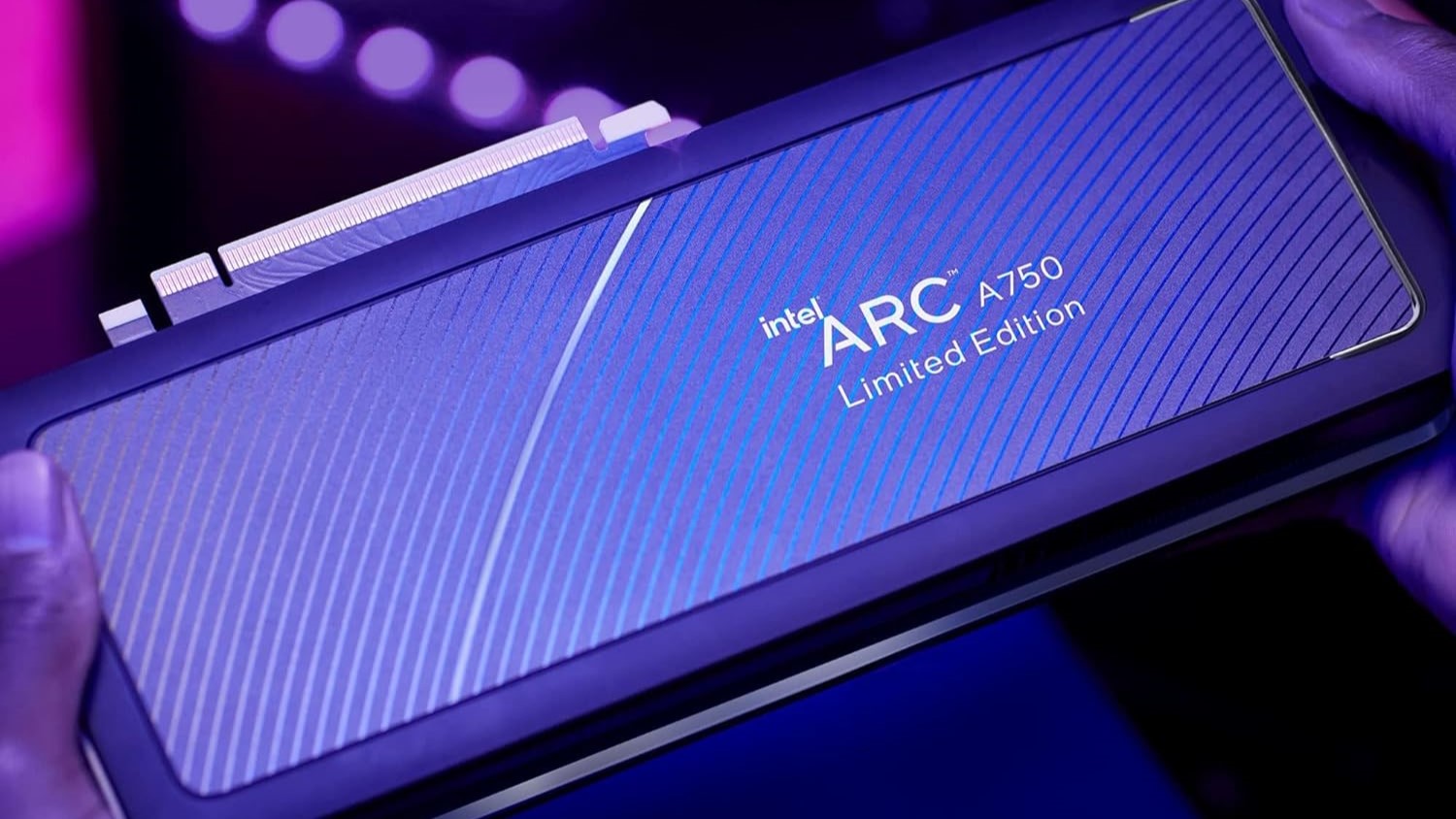
What you need to know
- Intel XeSS delivers AI-powered upscaling and competes with NVIDIA DLSS and AMD FidelityFX Super Resolution.
- Intel just unveiled XeSS 1.3, which promises a significant performance boost of the previous version of XeSS.
- The benchmarks shared by Intel were performed on games modified with an experimental build of XeSS, but they show an average FPS increase of 10% when running on a system with an Intel Arc A750.
Intel announced a new version of its AI upscaling technology this week. XeSS 1.3 promises better performance than the original XeSS, including higher frame rates and reducing aliasing and ghosting. The improvements come thanks to updated AI models and show promising figures.
As expected, games using XeSS 1.3 have significantly higher frame rates than those without any upscaling. The bigger story is how much XeSS 1.3 raises frame rates when compared to the original XeSS. On a system with an Intel Arc A750, Intel saw an average 10% expected increase in FPS. Some titles saw even more of a jump, such as Diablo 4's frame rate increasing 28% over what was seen on when using the original XeSS.
The new version of XeSS also delivered improvements when tested on a system with an Intel Core Ultra 7 155H, though the bump was not as dramatic as the one seen in the Arc A750 system. Intel expects XeSS 1.3 to provide an 8% boost in FPS on average when compared to the original XeSS.
It's important to note that Intel's testing was done on games modified with an experimental version of XeSS 1.3. None of the titles shown in Intel's figures work with XeSS 1.3 at the moment, so you may have to wait a bit to boost the performance of Diablo 4.
The XeSS 1.3 SDK is available now through GitHub. Intel is working with game developers to integrate the upscaling technology into popular titles.
Why is XeSS 1.3 better?
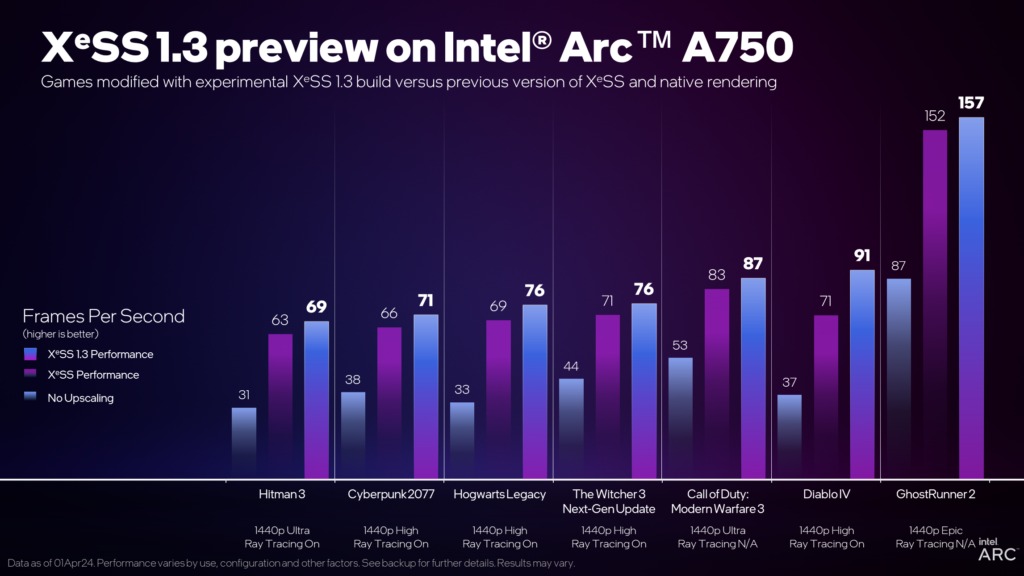
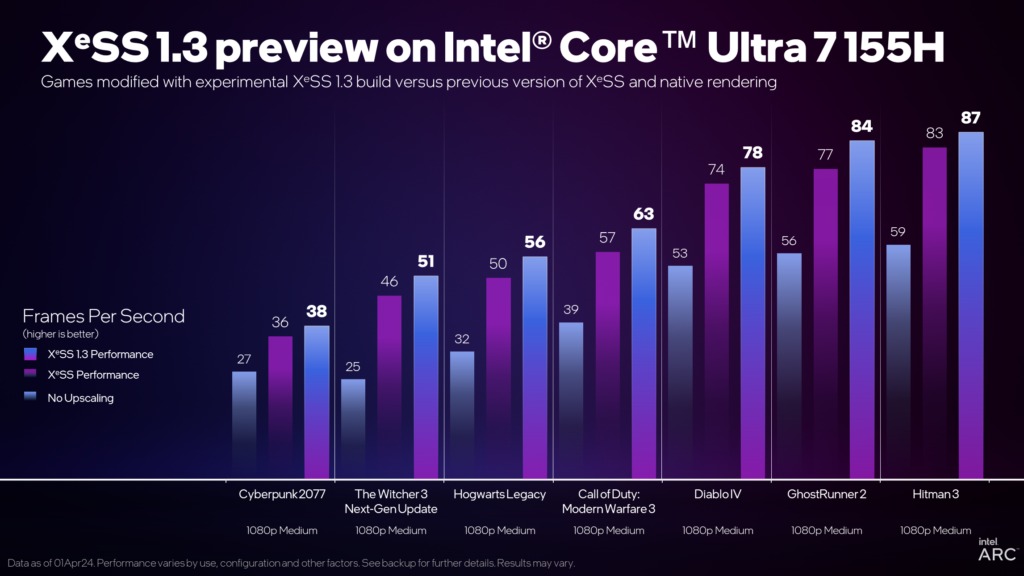
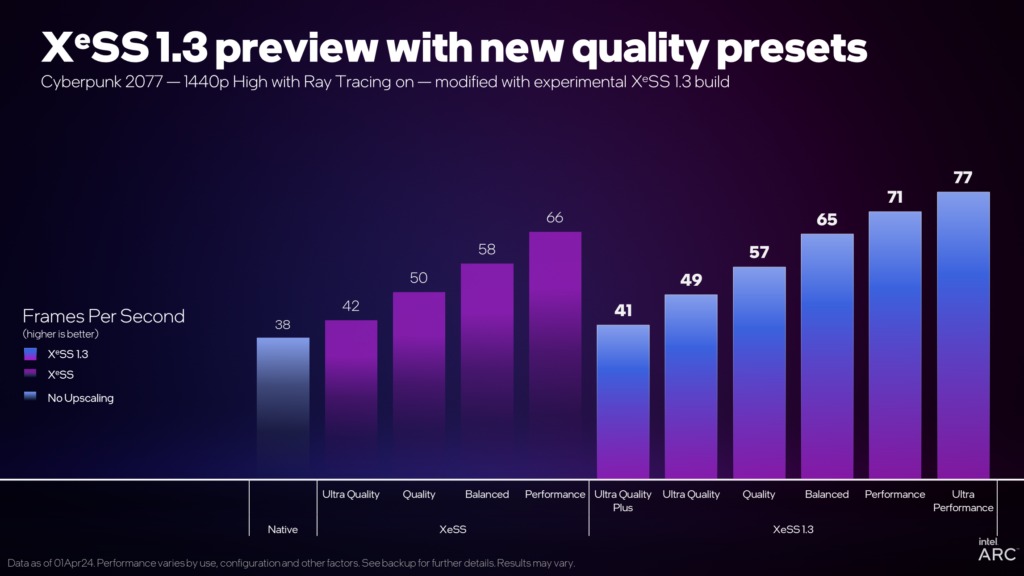
The secret sauce behind XeSS 1.3 is Intel's updated AI models. The tech giant worked on optimization and training with a special emphasis on difficult visual elements. The end result is "better anti-aliasing, less ghosting, and more temporal stability," as outlined by Intel.
| Preset | Resolution scaling in previous XeSS versions | Resolution scaling in XeSS 1.3 |
|---|---|---|
| Native Anti-Aliasing | N/A | 1.0x (Native resolution) |
| Ultra Quality Plus | N/A | 1.3x |
| Ultra Quality | 1.3x | 1.5x |
| Quality | 1.5x | 1.7x |
| Balanced | 1.7x | 2.0x |
| Performance | 2.0x | 2.3x |
| Ultra Performance | N/A | 3.0x |
AI upscaling tech can struggle with finer details, such as small lines that are very close to each other. Intel's updated AI models do a better job of handling these than the old XeSS.
All the latest news, reviews, and guides for Windows and Xbox diehards.
Intel also updated its quality presets and added more choices alongside XeSS 1.3.
Catching up to NVIDIA DLSS
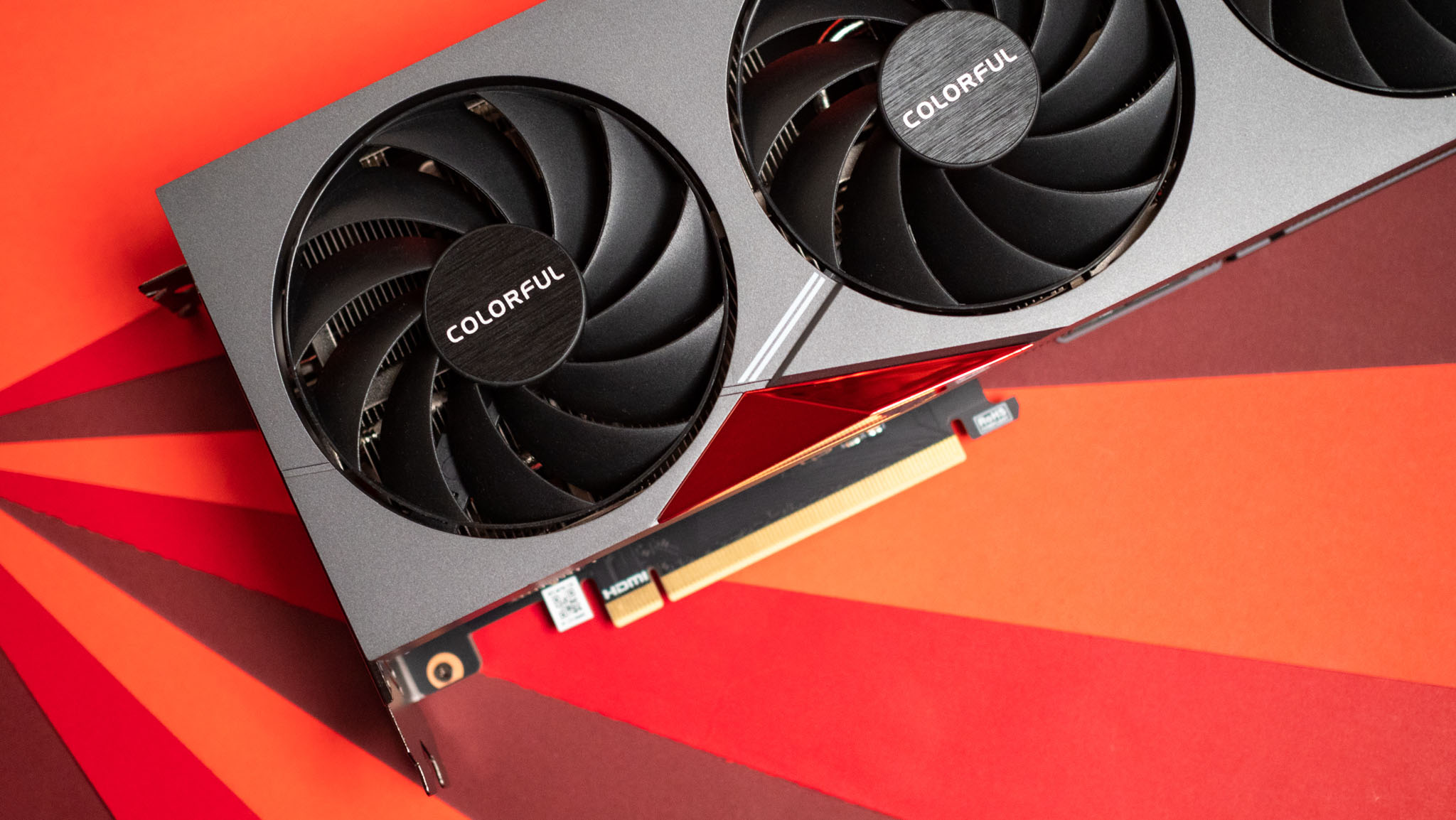
Over 100 games support Intel XeSS at the moment, but that pales in comparison to the number of titles that work with DLSS, which works with over 300 apps and games. Intel started its game upscaling journey after NVIDIA and entered the GPU space relatively recently, so it's understandable that Intel lags behind. But a recent announcement by Microsoft could help Intel catch up.
Microsoft unveiled DirectSR earlier this year. That API makes it possible to support multiple types of Super Resolution with a single code path. DirectSR works with NVIDIA DLSS Super Resolution, AMD FidelityFX Super Resolution, and Intel XeSS. It enters public preview soon and could make it much easier for developers to target Intel-based systems without requiring as much dedicated work.
"Super Resolution is a cutting-edge technique that increases the resolution and visual quality in games. DirectSR is the missing link developers have been waiting for when approaching SR integration, providing a smoother, more efficient experience that scales across hardware," explained Microsoft when it announced DirectSR.
Once generally avaialble, DirectSR could help Intel close the gap between its upscaling tech and NVIDIA's.

Sean Endicott is a tech journalist at Windows Central, specializing in Windows, Microsoft software, AI, and PCs. He's covered major launches, from Windows 10 and 11 to the rise of AI tools like ChatGPT. Sean's journey began with the Lumia 930, leading to strong ties with app developers. Outside writing, he coaches American football, utilizing Microsoft services to manage his team. He studied broadcast journalism at Nottingham Trent University and is active on X @SeanEndicott_ and Threads @sean_endicott_.
